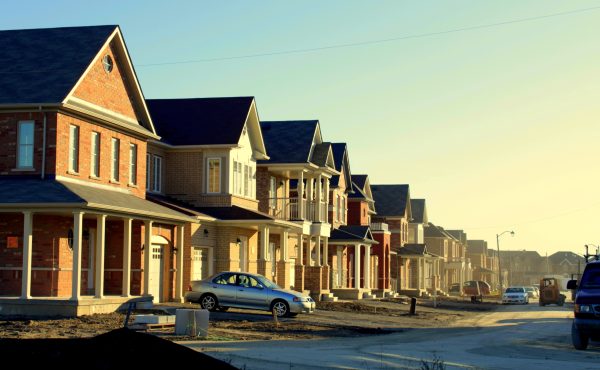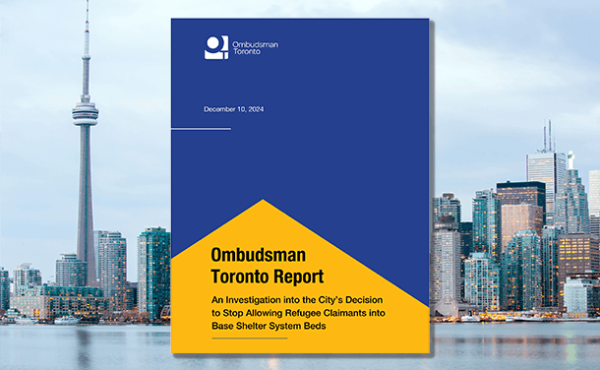In a widely read, shared and commented upon column in Saturday’s Globe and Mail, columnist Robyn Urback asked a question that, I’d say, is on a lot of people’s minds these days: how did we “normalize delinquent, disorderly behaviour” in the city’s parks?
Her characterization is clearly inaccurate. As Elise von Scheel, a city spokesperson told me, “[i]n 2025 so far, City workers and partners have referred 732 people from encampments into shelter spaces and have directly housed 311 more.” The number of people living in encampments fell from about 500 last year to about 300 this year, she added (see sidebar at bottom of column).
Urback upped the ante on her contention by blaming progressives for creating a politics that casts those living in encampments in parks as “neighbours” instead of calling them out for “unlawful” conduct such as open drug use near playgrounds. “It is plainly madness,” she wrote, “but then, it’s a special brand of madness, because to call out the deleterious effects of these behaviours has been to invoke the ire of those aforementioned activists.”
She doesn’t say much more about drug use except to bemoan (correctly) the problem of “playgrounds littered with drug paraphernalia,” but this omission is a massive blind spot in Urback’s commentary and, by extension, the public’s understanding, or not, of what’s behind the encampment phenomena, which is afflicting big cities all across North America.
Yes, the critical lack of affordable or supportive housing has played a huge role, as does the well documented conditions in the City’s shelter system, which, according to a recent independent assessment, has seen intolerable levels of violence, as well as over-crowding.
But the opioid epidemic, which pre-dates the pandemic but has become significantly worse in the past few years, has played an outsized role in the encampment story. Critics, like Urback and others, who try to talk past that hard and tragic fact are essentially reverting to the just-say-no approach to illicit drug use. Addiction, of course, simply doesn’t work that way, so no amount of political tough talk will transform this story, at least no absent the sort of readily accessible treatment options that remain few and far between.
Not that the tough talk, and tough policy, isn’t dominating the airwaves. Almost exactly a year ago, the Ford government made some hay on this exact topic with a new policy to “restore” safety to parks and public spaces. Queen’s Park promised $75 million for more shelters and some housing — a drop in the bucket, really, and a rounding error compared to what Ford is spending on the Therme spa — as well as new legislation to restrict the consumption of illegal substances in public spaces.
That law empowers the police to warn or charge people for taking drugs in parks, with fines up to $10,000 or six months in jail. But it’s highly unlikely that anyone charged will end up in remand; they’ll be back out on the streets, and consuming again, because such a law doesn’t do anything to connect people with addictions to treatment.
The city has established a complex inter-divisional response to encampments, but not because of the progressives whom Urback blames. A recent Supreme Court ruling has provided constitutional protections for encampment residents, which the city can’t simply ignore because homeowners and columnists feel grossed out at the sight of very poor people sleeping rough.
The city’s shelter division was also called out in 2022 by Toronto ombud Kwame Addo for its heavy-handed approach to clearing encampments, such as the incidents in Trinity-Bellwoods Park which garnered a huge amount of attention.
Consequently, the city last year adopted a human-rights based approach to managing encampments and dealing with the residents, which includes harm reduction practices as well as repeated offers of placement in shelters or transitional housing, as well as protocols for removal, which happens all the time. The provisions of the policy were tightened up at council last week, with an heavily amended motion from Brad Bradford to prioritize the removal of encampments inside a 50 metre radius of schools, daycares or playgrounds within 24 hours. (Bradford wanted a 200-metre radius.)
Now for the drug aspect. There’s no serious debate about the fact that many victims of the opioid epidemic end up living in encampments, and also that drug deals go down in those places. Nor can there be any serious debate about the fact that this use of parks makes many people uncomfortable, and for perfectly good reasons.
Yet the tough-love, `move ’em along’ approach has been found to simply exacerbate the addiction issues and places a greater cost on society. For example, a Boston Medical Centre study published this summer in Journal of the American Medical Association estimated, using statistical models, that that a municipally sanctioned sweep of a 400-person encampment “resulted in worse health outcomes than the status quo approach (leaving the encampment undisturbed), including more deaths, fewer person-weeks in treatment, and higher costs.”
The city’s “inter-departmental protocol” for encampments has focused mainly on addressing the most obvious pressure points, such as fire safety, theft/violence, the surge of refugees into the shelter system, and the ombud’s critiques of the city’s clearance methods. It has comparatively less to say about how to confront the people with serious addiction problems living in those encampments, except to reiterate that harm reduction — i.e., needle exchanges, etc. — remain a guiding principle.
Easy access to treatment is the missing link. There are supportive housing facilities that offer some treatment, and the University Health Network recently opened a transitional housing complex in Parkdale, on Dunn Ave., that offers even more direct medical services to homeless individuals who get placements. But the number of such facilities remains small relative to the scale of the epidemic.
As part of its 2024 encampment strategy, the city did acknowledge this dearth with what strikes me as a critical recommendation, that “City Council reiterate the Board of Health’s request to the Government of Ontario to fund low-barrier crisis stabilization spaces for people with mental health and/or substance use related issues that operate 24 hours per day, seven days per week across the city as part of a full continuum of evidence-based services, treatment and wrap around supports.”
The province responded by shutting down most safe consumption sites, and then shovelling money into new treatment centres, known as HART (Homelessness and Addiction Recovery Treatment) Hubs. The lion’s share of them are outside Greater Toronto. Toronto Public Health submitted its application for funding for a downtown HART Hub this past spring, with a proposal that reflects council’s recommendation, and includes 24/7 intake, medical monitoring and referrals, substance use treatment, primary care, outpatient medical specialty services, outreach-based services, withdrawal management beds, referrals to off-site services, such as abstinence-based, residential treatment options, and supportive housing.
Cudos to Queen’s Park for offering up the funding and to TPH for working to fill a big gap. It hardly sounds like the insanity that Urback posits in her take-down of the city’s apparently woke response to an addiction + homelessness crisis that has afflicted high-cost communities all across the continent.
Sidebar: The geography of Toronto’s encampments
According to statistics provided to Spacing by the city, there were 246 encampments in 87 parks as of November 14; an encampment is defined as a single tent. Eighteen of the city’s 25 wards have fewer than 10 (in italics), including four wards with none and seven with five or fewer (underscored). Sixty-eight percent of the 246 are in seven wards, all but one in older downtown areas. The breakdown suggests that encampments are a highly localized phenomena, notwithstanding all the political rhetoric and assertions from some critics that many city parks are no longer safe for children to be in.
- Ward 1 Etobicoke North – Two encampments in two parks
- Ward 2 Etobicoke Centre – No current reported encampments
- Ward 3 Etobicoke Lakeshore – Five encampments in five parks
- Ward 4 Parkdale High Park – 23 encampments in eight parks
- Ward 5 York South Weston – No current reported encampments
- Ward 6 York Centre – Nine encampments in three parks
- Ward 7 Humber River Black Creek – Eight encampments in three parks
- Ward 8 Eglinton Lawrence – Two encampments in one park
- Ward 9 Davenport – 14 encampments in six parks
- Ward 10 Spadina Fort York – 25 encampments in eight parks
- Ward 11 University Rosedale – Seven encampments in three parks *
- Ward 12 Toronto St Paul’s – Eight encampments in four parks
- Ward 13 Toronto Centre – 21 encampments in five parks
- Ward 14 Toronto Danforth – 33 encampments in six parks
- Ward 15 Don Valley West – No current reported encampments
- Ward 16 Don Valley East – Four encampments in one park
- Ward 17 Don Valley North – Two encampments in one park
- Ward 18 Willowdale – One encampment in one park
- Ward 19 Beaches East York – 17 encampments in five parks
- Ward 20 Scarborough Southwest – Nine encampments in five parks
- Ward 21 Scarborough Centre – 17 encampments in five parks
- Ward 22 Scarborugh Agincourt – Eight encampments in four parks
- Ward 23 Scarborough North – Seven encampments in three parks
- Ward 24 Scarbough Guildwood – Three encampments in three parks
- Ward 25 Scarborough Rouge Park – No current reported encampments
* There are an additional 21 encampments in parks that straddle multiple Ward boundaries, most abutting Ward 11.





